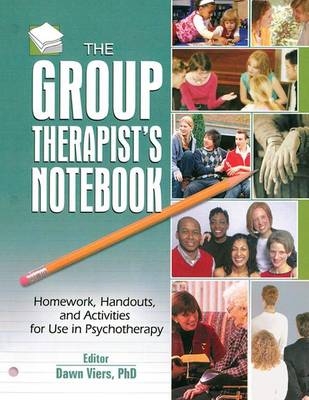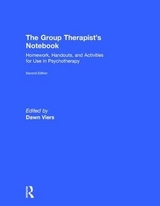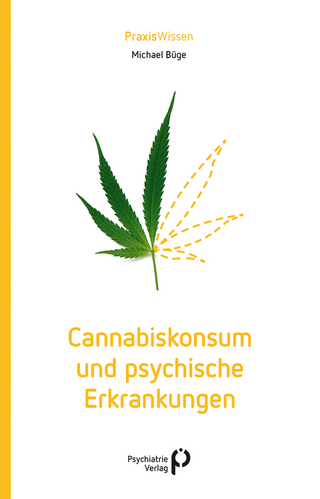
The Group Therapist's Notebook
Routledge (Verlag)
978-1-138-17013-1 (ISBN)
- Titel erscheint in neuer Auflage
- Artikel merken
Group work requires facilitators to use different skills than they would use in individual or family therapy. The Group Therapist’s Notebook: Homework, Handouts, and Activities for Use in Psychotherapy offers facilitators effective strategies to gather individuals who have their own unique needs together to form a group where each member feels comfortable exploring personaland often painfultopics. This resource provides creative handouts, homework, and activities along with practical ideas and interventions appropriate for a variety of problems and population types. Each chapter gives detailed easy-to-follow instructions, activity contraindications, and suggestions for tracking the intervention in successive meetings. Every intervention is backed by a theoretical or practical rationale for use, and many chapters feature a helpful illustrative clinical vignette.
Group work has several benefits, including the ability to treat a greater number of clients with fewer resources. Group therapy work also relies on various theories that may seem to be difficult to apply to clinical practice. The Group Therapist’s Notebook is a practical guide that builds a bridge between theory and practice with ease. The text provides help for psychotherapists who are either beginning group practice or already utilizing groups as part of their practice and need a fresh set of ideas. The workbook framework allows group specialists to generate approaches and modify exercises to fit the varying needs of their clients. This guide offers a wide variety of valid approaches that effectively address client concerns. The book provides therapists with tips and ideas for starting and facilitating a group, assists them through sets of interventions, activities, and assignments, then showcases a variety of interventions for needs-specific populations or problems. Special sections are included with interventions for teens, young adults, couples, and family groups.
Interventions in The Group Therapist’s Notebook include:
anger management skills
ease feelings of shame and guilt
substance use and abuse
grief and loss
positive body image
guidance through change
independence and belonging
interpersonal skills
coping skills
crisis intervention strategies
much, much more!
The Group Therapist’s Notebook is an essential resource for both novice and more experienced practitioners working in the mental health field, including counselor educators, social workers, guidance counselors, prevention educators, and other group facilitators. Every nonprofit agency, counseling center, private practice, school, hospital, treatment facility, or training center that organizes and implements therapy groups of any type should have this guide in their library.
About the Editor
Contributors
Foreword (M. Carolyn Thomas)
Preface
Acknowledgments
SECTION I: GETTING STARTED
1. Turning Group Theory into Group Practice: The Role of the Experiential Component in Group Facilitator Training (Donna Starkey and Laura Simpson)
2. Tips on Running a Group (Christopher M. Faiver)
3. Creating a Disclosure Statement for Group Work: Best Practices in Action (R. Valorie Thomas and Meredith W. Neill)
SECTION II: INTERVENTIONS FOR ALL GROUPS
4. Play Ball! The Name Is the Game (Shirley R. Simon)
5. Learning How to De-Stress (Elwood R. Hamlin II and Michael Kane)
6. The Magic Wand (Shirley R. Simon)
7. Group Sculpting (Elwood R. Hamlin II, Michael Kane, and Dawn Viers)
8. Striving for Meaningfulness and Self-Acceptance: An Existential-Humanistic Group Therapy Activity (Glenn W. Lambie and Shari M. Sias)
9. What’s in a Name? (Paul Springer, George W. Bitar, and Robert Gee III)
10. Behavioral Scaling As a Group-Guided Approach to Self-Management (Nancy G. Calley)
11. Activities for Termination (Randyl D. Smith, Maria T. Riva, and Jeffrey A. Rings)
SECTION III: INTERVENTIONS FOR POPULATION-SPECIFIC GROUPS
12. Nine Steps to Anger Management (Floyd F. Robison)
13. A Little Worn and Wrinkled, But Still Valuable (Susan A. Adams)
14. Building a Bridge: An Experiential Group for Adult Survivors of Sexual Abuse (Pat L. Sims, W. Jeff Hinton, Mary Ann Adams, and Charles K. West)
15. Web of Entanglements (Markie Twist)
16. Adult Children of Alcoholics/Children of Alcoholics: Family Description (Shari M. Sias and Glenn W. Lambie)
17. Holding the Weight of Grief at Arm’s Length: Tasks for Resolving Grief (Susan A. Adams)
18. Grief and Loss: Healing Through Group Therapy (Jane Roberts)
SECTION IV: INTERVENTIONS FOR ADOLESCENT AND COLLEGE-AGE GROUPS
19. The How-To-Book: A Model-Driven Process for Group Work with Adolescents (Dave Bryant)
20. How to Be Different and Still Belong (Brigid Noonan)
21. Acting Out: Dramatic Life-Skills Activities (Trey Fitch and Jennifer Marshall)
22. Using Psychoeducational Groups with Latino(a) High School Students (Edil Torres-Rivera and Loan T. Phan)
23. Prompted Feedback to Increase Interpersonal Skill Development (Nancy G. Calley)
24. Crafty Coping: Coping Tools for College Students (Jennifer Marshall and Trey Fitch)
25. A Group Intervention for Athletic Teams (Victoria L. Bacon and Marcia K. Anderson)
SECTION V: INTERVENTIONS FOR COUPLE AND FAMILY GROUPS
26. Make Your Partner Your Friend, Not Your Enemy (Floyd F. Robison)
27. Gender Awareness and Media Messages: An Activity for Couple Therapy (Toni S. Zimmerman, Jennifer L. Krafchick, and Jennifer T. Aberle)
28. Family Mine Field (Dawn Viers)
29. Life’s Not Fair (Aaron Oberman)
30. Eight Days in a Week: Using Calendars in Family Groups (Dawn Viers)
31 Maintaining Stability; Life Cycle Transitions in Families Coping with Childhood Cancer (Jessica A. Russo, Laura Tejada, Randall L. Hilscher, and John J. Zarski)
Index
Reference Notes Included
| Erscheinungsdatum | 19.01.2016 |
|---|---|
| Verlagsort | London |
| Sprache | englisch |
| Maße | 216 x 280 mm |
| Gewicht | 676 g |
| Themenwelt | Medizin / Pharmazie ► Medizinische Fachgebiete ► Psychiatrie / Psychotherapie |
| Sozialwissenschaften ► Soziologie | |
| ISBN-10 | 1-138-17013-5 / 1138170135 |
| ISBN-13 | 978-1-138-17013-1 / 9781138170131 |
| Zustand | Neuware |
| Haben Sie eine Frage zum Produkt? |
aus dem Bereich



